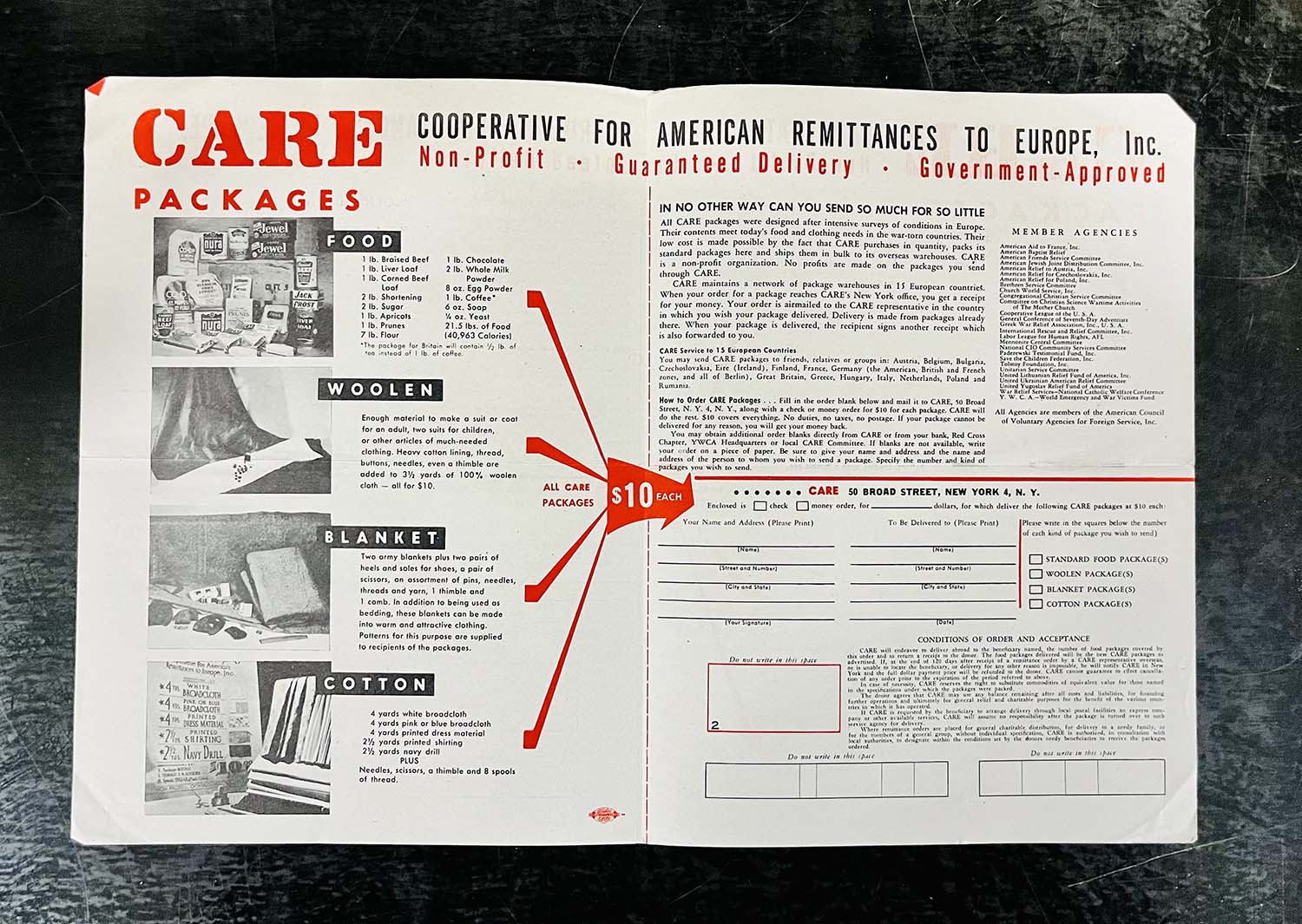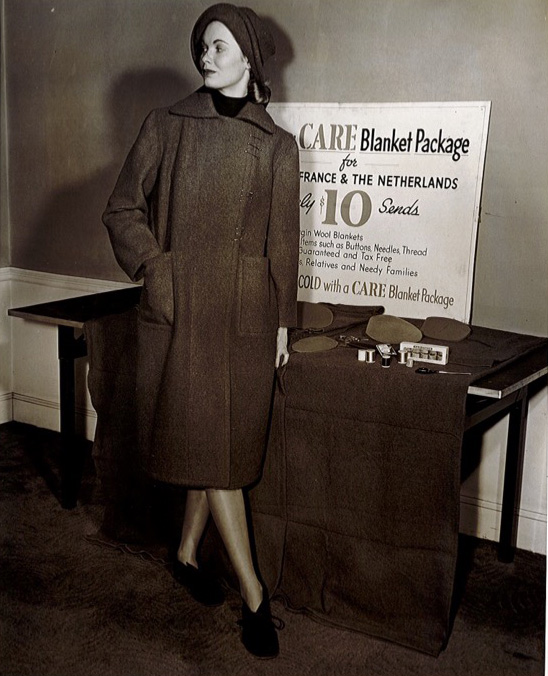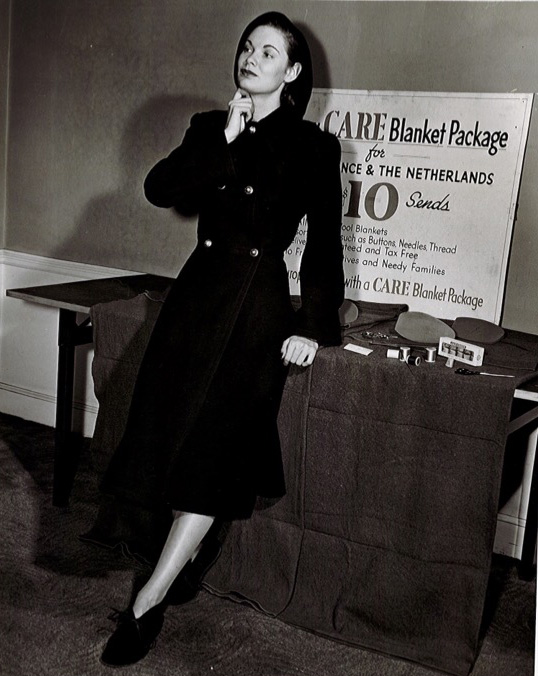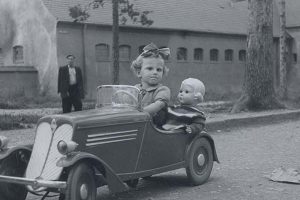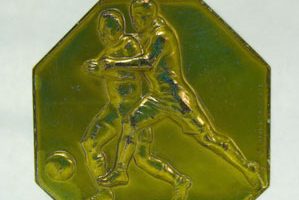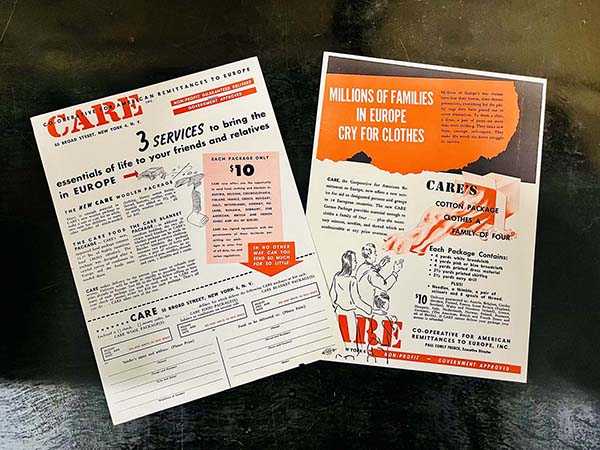
CARE Packages in Action
How famous fashion designers utilized CARE packages after World War II
By Rebecca Weintraub, Senior Processing Archivist
If you dig deep enough into the JDC Archives, you’ll find quite a few famous names including Marc Chagall, Albert Einstein, Leonard Bernstein, and Eleanor Roosevelt. But did you also know that among the Archives’ extensive records, you can also find such celebrated designer names as Madame Eta, Lilly Daché, Emily Wilkens, and Claire McCardell?
While it’s likely that some or all those names may be unfamiliar to you, their link to JDC’s history comes through a post-war-founded organization called CARE. The Cooperative for American Remittances to Europe (CARE) program (now known as the Cooperative for Assistance and Relief Everywhere) was founded in 1945 by America’s 26 leading volunteer agencies, one of which was the JDC, to rush lifesaving CARE packages to survivors of World War II in Europe in a safe, non-profit channel. More than 100 million packages reached people in need in the two decades following the war. When the program first began, ten dollars bought a CARE Package, with a guarantee that the recipient would receive it within four months.
CARE leaflets and package order forms.
Though the first packages were comprised of food and included meat, dried fruit, coffee, and other foodstuffs to be sent to those abroad in need, CARE parcels eventually expanded to include three other kinds of packages. These included the CARE Cotton package, which contained cotton fabric and sewing equipment, and the CARE Woolen package, which included enough material and sewing equipment to make suits and/or coats for adults and children, all for $10. In this photo from the JDC Archives, Paul Comly French—CARE’s General Manager—is shown examining the contents of the CARE Woolen package. In it, he’s holding up some all-wool fabric in a herringbone weave—we also found swatches of this very fabric in the same file, also shown in the image below.

Paul Comly French, CARE’s General Manager, examines the contents of the CARE Woolen package. Beside it are swatches of the herringbone weave he’s holding.
The third category of these packages was the CARE Blanket package, which included woolen blankets that could be made into clothing. This package also included two pairs of heels and soles, a pair of scissors, and other assorted notions to help with the construction of the clothing.
And it’s here where the famous names mentioned above come in. Madame Eta, Lilly Daché, Emily Wilkens, and Claire McCardell were all top fashion designers who set out to prove that the CARE blankets being sent to Europe were suitable for clothing. The clothes for men, women, and children featured in these photos were then displayed at the New York Dress Institute. In one photo, Hungarian-American fashion designer Madame Eta designed and sewed a coat dress and hood made from a single army blanket. In another, well-known American designer Claire McCardell created and styled her look using everything in the Woolen package, down to the safety pins. The last photo highlights a suit designed by American fashion designer Emily Wilkens and a hat designed by French-born American milliner Lilly Daché—both made from a dyed army blanket.
(Left to right:) Modeled here is a suit designed by Emily Wilkens and a hat designed by Lilly Daché, both made from dyed GI blankets; a coat dress and hood designed by Claire McCardell using a single army blanket; a coat dress and hood designed by Madame Eta using a single army blanket.
At a time when Europe was just emerging from the darkness of war, these packages provided light, support, and sustenance for those in need. And what these designers helped show was that it was possible to feel beautiful, put together, and human with the simplest of objects in the most complicated of times.

